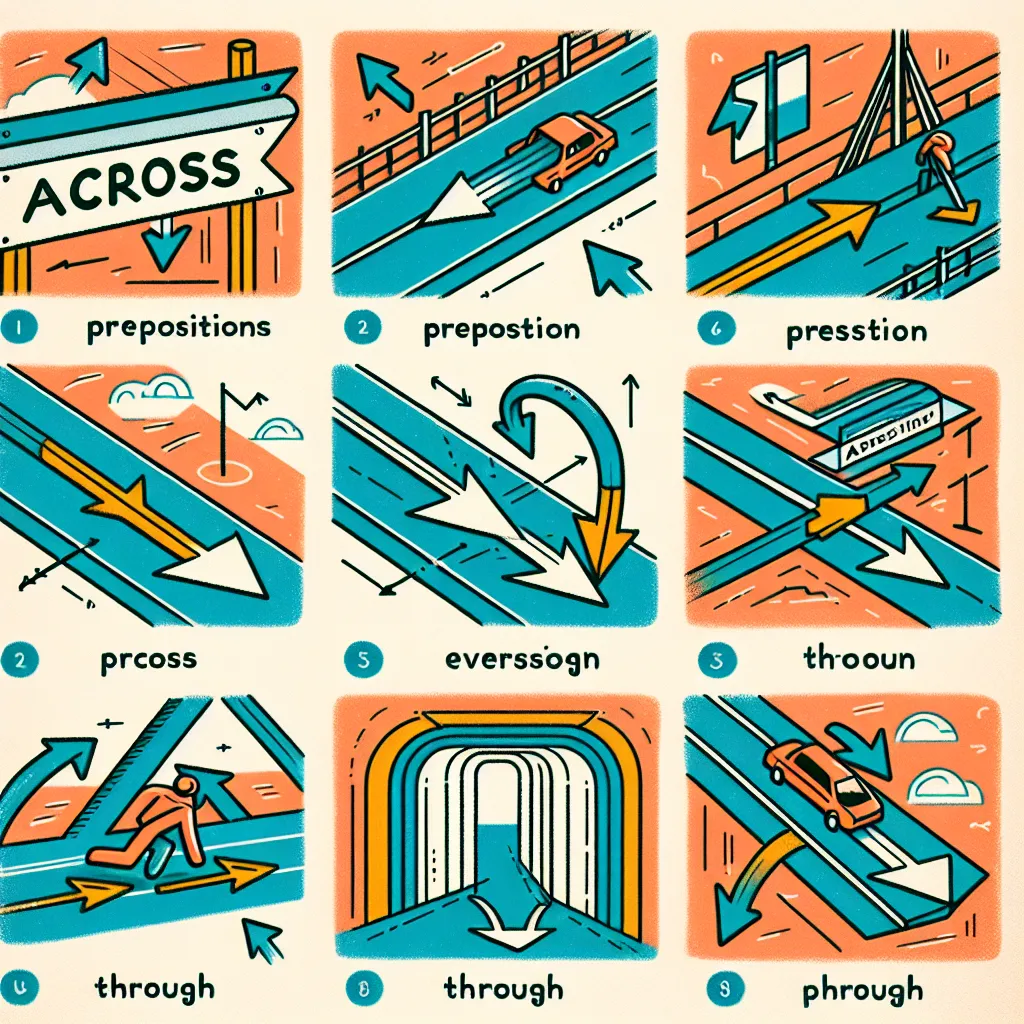Prepositions of movement are crucial elements in the English language, especially when it comes to describing the direction, path, or manner of motion. For IELTS test-takers, mastering these prepositions is essential for achieving high scores in both the writing and speaking sections. In this comprehensive guide, we’ll explore the correct usage of prepositions of movement, providing you with valuable insights and practical tips to enhance your IELTS performance.

Understanding Prepositions of Movement
Prepositions of movement are words that indicate the direction or manner in which something or someone moves. They help to create a clear picture of motion in the listener’s or reader’s mind. Some common prepositions of movement include:
- to
- from
- across
- through
- into
- out of
- along
- around
- over
- under
- up
- down
- towards
- away from
Key Functions of Prepositions of Movement
- Indicating direction: They show where something is moving.
- Describing path: They illustrate the route taken during movement.
- Specifying manner: They can sometimes imply how the movement occurs.
Examples of Prepositions of Movement in Context
Let’s examine some examples to better understand how these prepositions are used:
- “The cat jumped onto the table.”
- “We walked through the forest to reach the lake.”
- “The plane flew over the mountains.”
- “She ran across the street to catch the bus.”
- “The children swam under the bridge.”
- “The train travels from London to Paris.”
- “They hiked up the mountain towards the summit.”
- “The boat sailed along the coast.”
- “He drove around the city center looking for a parking space.”
- “The snake slithered out of its hiding place.”
Applying Prepositions of Movement in IELTS
Understanding and correctly using prepositions of movement can significantly enhance your performance in various parts of the IELTS test.
IELTS Writing Task 1
In the Academic IELTS Writing Task 1, you may need to describe maps or processes that involve movement. Using prepositions of movement accurately can make your description more precise and coherent.
Example:
“The diagram shows how water flows from the mountains through the valley and into the sea. Rivers originate in the highlands and move down towards the lowlands, passing through several towns along the way.”
IELTS Writing Task 2
While less directly related, prepositions of movement can still be useful in Writing Task 2 for creating vivid examples or analogies.
Example:
“As society moves towards a more digital future, we must not lose sight of traditional values. We should strive to bring the best of both worlds together, rather than moving away from our cultural roots.”
IELTS Speaking
Prepositions of movement are particularly useful in the Speaking test, especially when describing your hometown, favorite places, or travel experiences.
Example:
“In my hometown, there’s a beautiful park. You can walk along the river, cross over a small bridge, and then go through a flower garden. Many people jog around the lake in the center of the park.”
Common Mistakes with Prepositions of Movement
-
Confusing “in” and “into”:
- Incorrect: “She jumped in the pool.”
- Correct: “She jumped into the pool.”
-
Misusing “through” and “across”:
- Incorrect: “We drove across the tunnel.”
- Correct: “We drove through the tunnel.”
-
Mixing up “over” and “above”:
- Incorrect: “The plane flew above the bridge.”
- Correct: “The plane flew over the bridge.”
-
Incorrectly pairing “to” and “from”:
- Incorrect: “I’m going from London to Paris from the train.”
- Correct: “I’m going from London to Paris by train.”
-
Forgetting to use a preposition:
- Incorrect: “She entered the room.”
- Correct: “She entered into the room.”
Practice Techniques for Mastering Prepositions of Movement
-
Visualization exercises: Create mental images of movements and describe them using appropriate prepositions.
-
Map description practice: Use real or imaginary maps to describe routes and movements.
-
Story creation: Write short stories or scenarios that involve various types of movement.
-
Preposition games: Play online games or apps designed to teach prepositions of movement.
-
Real-life observation: Describe the movements you see in your daily life using precise prepositions.
Conclusion
Mastering prepositions of movement is a crucial skill for IELTS success. By understanding their correct usage and practicing regularly, you can significantly improve your ability to describe motion accurately and vividly. This skill will not only boost your IELTS scores but also enhance your overall English language proficiency. Remember, practice makes perfect, so keep working on these prepositions in various contexts to become more confident in your language use.
We encourage you to share your own experiences with prepositions of movement in the comments below. How have you improved your use of these prepositions? Do you have any additional tips for fellow IELTS test-takers? Don’t forget to explore our other IELTS preparation articles for more valuable insights and strategies!